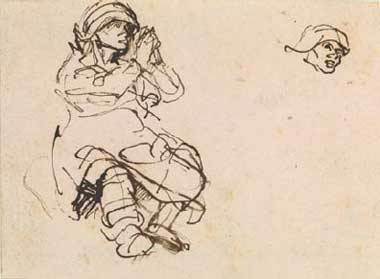
Rembrandt Harmensz. van Rijn (1606–1669)
Study of a Sick Woman for the Hundred Guilder Print and an Alternative Sketch of Her Head, ca. 1647–49
Pen and brown ink
Rembrandt’s World: Drawings from the Moore Collection The Morgan Library and Museum presents over ninety drawings by some of the preeminent artists from the the Dutch Golden Age. January 20–April 29, 2012]]>
Source: Morgan Library and Museum
Bolstered by its recent political independence, economic prosperity, and maritime supremacy, the Dutch Republic witnessed an artistic flourishing during the seventeenth century, known as the Dutch Golden Age.
The Dutch Republic of the seventeenth century was a federation of seven states—Holland, Zeeland, Gelderland, Utrecht, Friesland, Overijssel, and Groningen. The exhibition focuses on artists who worked primarily in their native lands, rather than those whose careers took them to France, Italy, or elsewhere abroad, and highlights the broad spectrum of subjects—portraiture, marine views, landscapes, biblical and mythological narratives, genre scenes, and the natural world—that fueled their creative imaginations.
“The collection of Clement C. Moore, known as Chips, is a testament to the concentration of talent in the Dutch Republic during its Golden Age, in the seventeenth century,” said William M. Griswold, director of The Morgan Library & Museum. “I am honored and thrilled that the Morgan has chosen to exhibit and catalogue my collection of Dutch drawings,” said Mr. Moore.
Among the finest drawings in the exhibition are portraits and figure studies, including two by Rembrandt. “A Beggar, Facing Left, Leaning on a Stick” is Moore’s most recently acquired Rembrandt, and is also the earliest chronologically, dating to 1628–29.
Related content
‘The Age of Elegance’: old master drawings at the Morgan Library (exhibition, 2011)
Follow us on:


